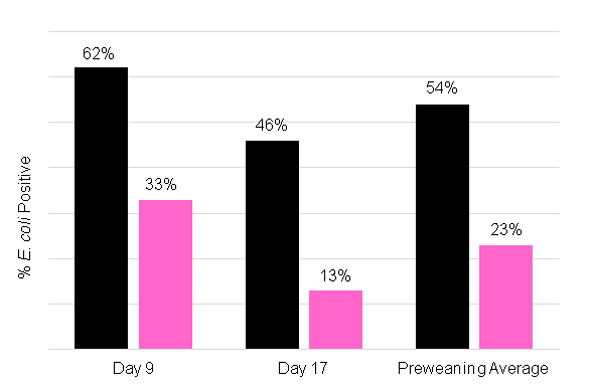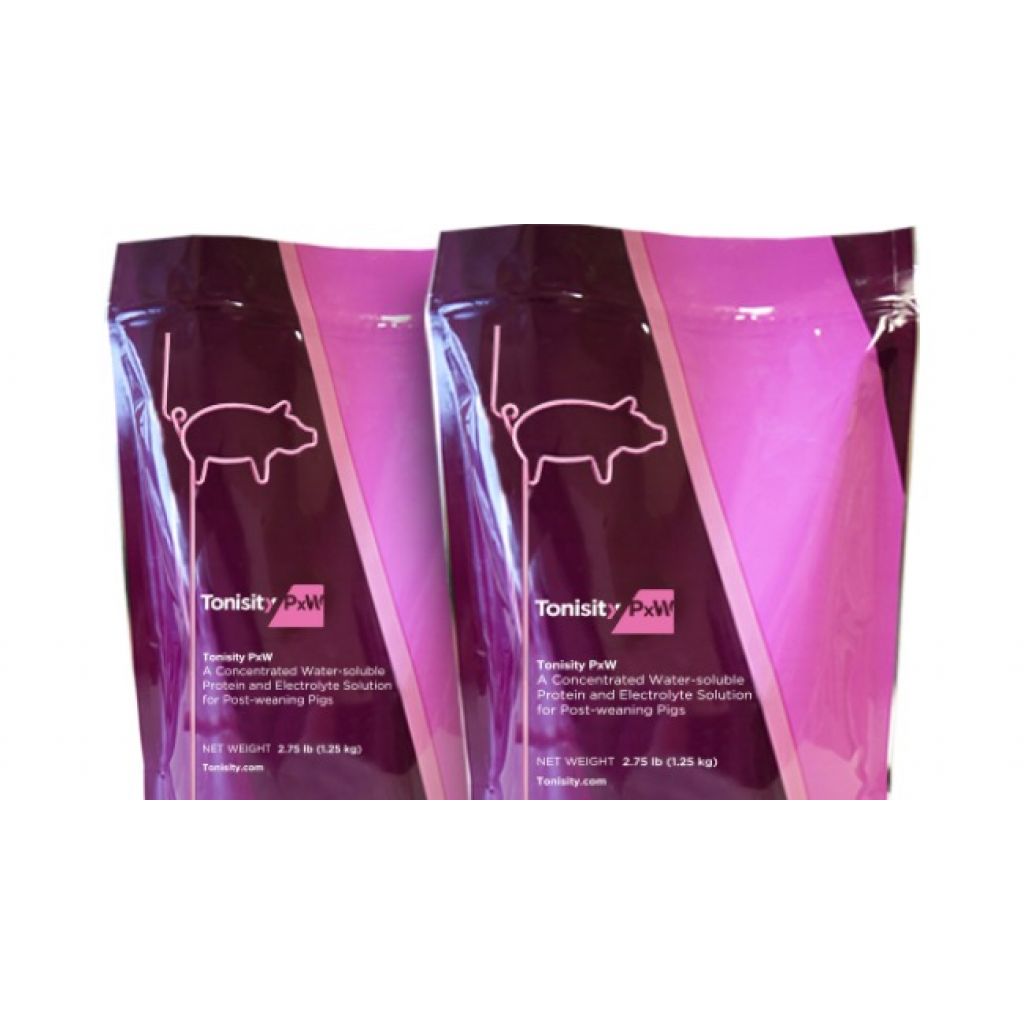Tonisity Px Reduces E. coli and Improves Intestinal Microbial Profile
S. G. Buzoianu, M. Cortyl, C. Putrino, W.K. Park, A. M. Firth
Tonisity International, Dublin, Ireland; California Polytechnic State University, San Luis Obispo, CA, USA; Great
Harvest Co. Ltd., Chungju-si, Republic of Korea
Introduction: The functional maturation of the pig’s digestive and immune systems immediately post-birth is largely mediated by the colonization with maternal and environmental microorganisms. Optimal microbial colonization is known to improve the piglet’s lifelong immune status, reduce pathogen presence and maximize the pig’s digestion and growth performance [1]. Early interventions which modulate the intestinal microbiome can result in healthier and more productive pigs by harnessing the “window of opportunity” that exists early in life. The aim of this study was to assess the effects of early-life administration of an isotonic protein solution on the gut microbiome and on the presence of E. coli.
Materials and Methods: 15 gilts (Yorkshire x Landrace x Duroc) and their litters (161 piglets) were enrolled in the study. Litters were allocated to one of two treatments, Group A (Control) – no pre-weaning supplementation, and Group B – piglets were supplemented from day 2 to 8 of life with 500 mL/litter/day of an isotonic protein solution in an open pan. Group B litters also received the same solution 3 and 2 days pre-weaning, followed by a mixture of creep feed and solution from 1 day pre-weaning to 2 days post-weaning. Both groups had ad libitum access to normal feed after weaning (at 21 days). Pigs from each litter were randomly selected and euthanized at trial days 9 (n=13 vs 12), 17 (n=13 vs 14) and 30 (n=10 vs 8). Feces were collected for 16S rRNA gene sequencing (MiSeq Illumina). Samples for semi-quantitative E. coli culture were taken from the ileal mucosa.
Results: Effects on beneficial bacteria. Group B piglets had a 3.5-fold higher faecal Lactobacillus at day 9 of life compared to Control (4.0% vs 1.2% of all gut bacteria, respectively; P=0.0001), amounting to a 233% increase.
Lactobacillus are beneficial gut bacteria which modulate gut and immune maturation, displace potential pathogens and improve digestion and growth. Gut Lactobacilli specialize in using simple carbohydrates. Therefore, the
presence of easily-digestible ingredients in the isotonic protein solution provided them with the substrate they needed to thrive. Bacteroides were 2-fold more abundant at day 17 in Group B piglets compared to the Control group (8.5% vs 4.3% of all gut bacteria; P<0.05). The Bacteroides are also beneficial, linked to improved immune function and more rapid gut maturation [2]. Their abundance is inversely correlated to that of Lactobacillus, however, both bacteria are beneficial.
Potential pathogens: Members of the Prevotellaceae family are carbohydrate fermenters in the intestine. However, they are also linked to intestinal pathology due to weaning stress in pigs, especially as they are known mucus degraders. Prevotellaceae were significantly lower in Group B pigs compared to Control at days 9 and 17 (20.5% and 27.6% vs 29.0% and 37.0%, of all gut bacteria, respectively; P<0.01). These differences represent a 29% reduction at day 9 and a 25% reduction at day 17. No differences were seen at day 30 of life. E. coli. Fewer of the Group B pigs (7/30, 23%) were positive for E. coli pre-weaning (day 9 and 17 combined) compared to Controls (14/26, 54%) (P = 0.01; Figure 1). This represents a 57% reduction.

Figure 1. Percentage of Pigs Positive for E. coli
Conclusions: Administration of an isotonic protein solution early in life stimulated beneficial bacteria while reducing potential pathogens and reducing the number of E. coli-positive pigs. Since most pre-/peri-weaning intestinal pathology in pigs is linked to E. coli, administration of this isotonic protein solution provides an alternative to antimicrobials.
References:
[1] Pluske JR et al, 1997. Livest. Prod. Sci., 51 215-236
[2] Wexler HM, 2007. Clin. Microb. Rev. 20, 593-621
Welcome to 333
Connect, share, and interact with the largest community of professionals in the swine industry.
Celebrating 137875Users on 333!
Sign upAlready a member?







